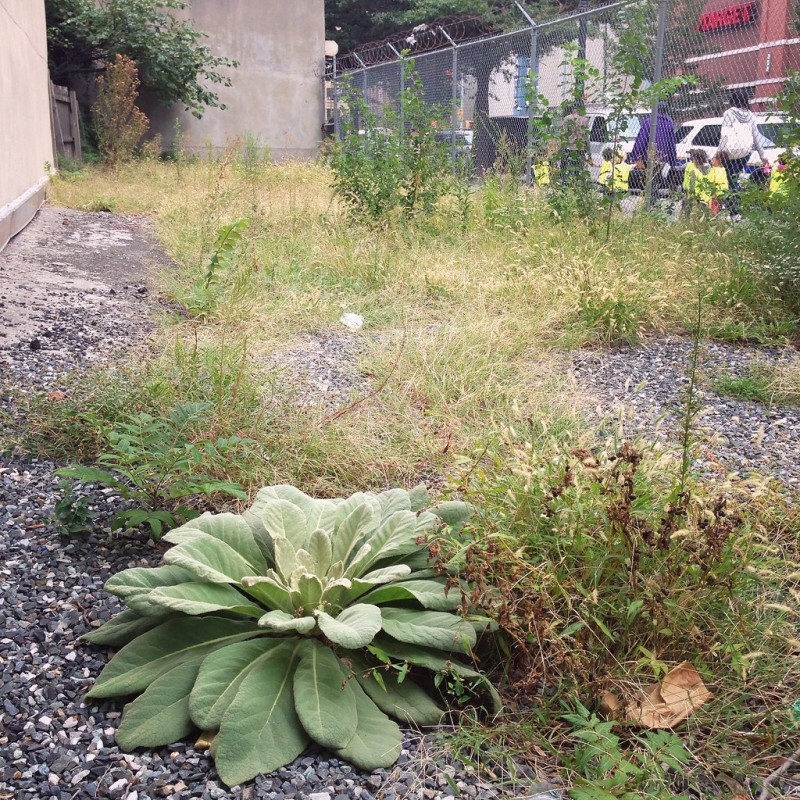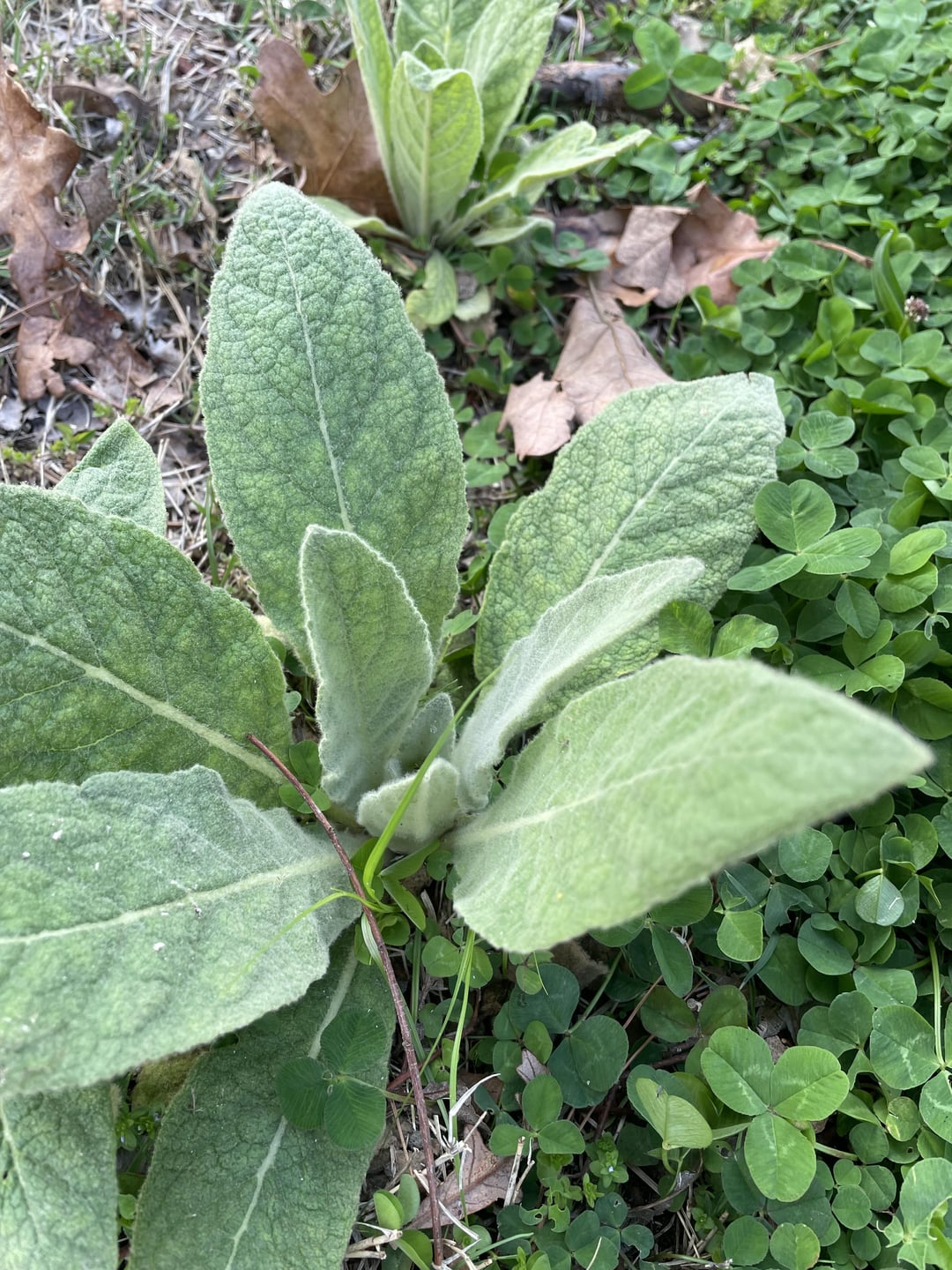As an Amazon Associate, I earn from qualifying purchases.
Weeds with fuzzy leaves are often resilient and can be challenging to manage. They include plants like lamb’s ear and mullein.
Weeds with fuzzy leaves can be a common nuisance in gardens and lawns. These plants often have a soft, hairy texture that makes them distinctive. Lamb’s ear, for example, is known for its velvety leaves and can quickly spread if not controlled.
Mullein, another fuzzy-leaved weed, grows tall and produces yellow flowers. Both of these weeds thrive in various conditions and can outcompete desirable plants. Identifying and managing these weeds early can help maintain a healthy garden. Using proper weeding techniques and understanding the specific characteristics of these plants are crucial for effective control.
Common Fuzzy-leaf Weeds
Fuzzy-leaf weeds like lamb’s ear and mullein are common in gardens. These plants often have soft, hairy leaves. They can spread quickly and compete with other vegetation for nutrients.
Characteristics
Fuzzy leaves on weeds can feel soft. They often have tiny hairs. These hairs protect the plant. Many fuzzy-leaf weeds are found in gardens. They can be tough to remove. Some of them spread quickly. It is important to identify them early. This helps in controlling their growth.
Common Examples
Here are some common fuzzy-leaf weeds:
- Lamb’s Ear: Soft, woolly leaves.
- Mullein: Large, velvety leaves.
- Common Groundsel: Leaves covered with fine hairs.
- Horehound: Wrinkled, fuzzy leaves.
Benefits And Drawbacks
Weeds with fuzzy leaves offer natural protection against pests and provide a soft texture to gardens. Despite their charm, these weeds can spread rapidly, competing with other plants for resources.
Ecological Benefits
Fuzzy leaves on weeds help protect the plant. They guard against pests and harsh weather. The fuzz traps moisture, helping the plant stay hydrated. Many animals find shelter in these plants. They can also be a food source for insects. These plants contribute to the biodiversity of an area. They can improve soil health over time. Fuzzy leaves help maintain the ecosystem’s balance.
Potential Problems
Fuzzy leaves can cause allergies in some people. They might irritate the skin. These weeds can spread very quickly. They may take over gardens and fields. Farmers often find them troublesome. Removing them can be hard. They might compete with crops for resources. This can lead to lower yields. Some animals might not eat these plants. This can affect the food chain. They can also be hard to identify. Some look like useful plants. This makes control even harder.
Identification Tips
Identifying weeds with fuzzy leaves involves examining their texture and appearance. Soft, hairy surfaces often indicate the presence of invasive species. Recognizing these traits is essential for effective weed management.
Leaf Texture
Fuzzy leaves feel soft and hairy. They often have a velvety touch. Some weeds have fine hairs covering their leaves. These hairs can be short or long. The fuzziness helps protect the weed from pests. It also helps in retaining moisture. Fuzzy leaves might appear silvery or grayish.
Growth Patterns
Weeds with fuzzy leaves grow in different ways. Some spread quickly across the ground. Others grow tall and stand upright. They can form dense clusters. This makes them hard to remove. Their roots are often strong and deep. These growth patterns help them survive in tough conditions.

Manual Removal Methods
Hand-pulling weeds is a simple method. It is effective for small areas. Ensure you remove the entire root. This prevents regrowth. Wet soil makes pulling easier. Use gloves to protect your hands. Dispose of pulled weeds properly to prevent the spread of disease.
Garden tools can help you remove weeds more quickly. Tools like hand trowels or weeders are useful. Insert the tool under the weed’s base. Leverage the tool to pull out the weed. Ensure the root comes out completely. Use a hoe for larger areas. A hoe cuts weeds at the soil level. This method is quick and efficient. Clean tools after use to prevent the spread of disease.
Chemical Control Options
Herbicides help control weeds with fuzzy leaves. Selective herbicides target specific weeds. Non-selective herbicides kill all plants. Pre-emergent herbicides prevent weeds from growing. Post-emergent herbicides kill weeds that have already grown. Select the appropriate herbicide for your specific weed problem.
Read the label carefully before using any herbicide. Apply herbicides on a dry, windless day. Wear protective clothing and gloves. Keep children and pets away from treated areas. Do not water the area for at least 24 hours after application. Follow these tips for effective weed control.

Organic Management Strategies
Organic methods can help control weeds with fuzzy leaves. Use vinegar as a natural herbicide. Spray it directly on the weeds. This weakens the plant and stops growth. You can also apply boiling water. Pour it on the weeds to kill them. This method is safe and effective.
Another remedy is using mulch. It blocks sunlight and prevents weed growth. Spread a thick layer around your plants. This keeps the soil moist and cool.
Some insects can help manage weeds. Introduce ladybugs to your garden. They eat aphids that harm plants. Ground beetles are also helpful. They feed on weed seeds, thereby reducing the spread of weeds.
Parasitic wasps can control caterpillars. These caterpillars damage plants and aid weed growth. Encouraging these insects helps maintain a healthy garden.
Preventive Measures
Healthy soil reduces weed growth. Rich soil helps plants grow strong. Organic matter improves soil health. Compost adds nutrients. Cover crops prevent soil erosion. Regular testing checks soil quality. Adjust pH levels if needed. Healthy soil supports plant growth.
Mulching helps control weeds. Place mulch around plants. Mulch blocks sunlight from weeds. It keeps soil moist. Use organic mulch like straw or leaves. Mulch layers should be 2-3 inches thick. Reapply mulch as needed. Mulch also adds nutrients to soil.
Long-term Maintenance
Fuzzy-leaved weeds require consistent, long-term maintenance to prevent their spread. Regular pruning and monitoring help keep these resilient plants in check.
Routine Inspections
Regular checks help control weeds with fuzzy leaves. Spotting weeds early is key. Remove them before they spread. Use gloves to avoid skin irritation. Inspect your garden weekly. Pay attention to damp areas where weeds thrive. Pull out weeds by the root to prevent regrowth.
Sustainable Practices
Use natural methods to manage weeds. Mulch helps to block sunlight, stopping weed growth. Compost dead weeds to recycle nutrients. Introduce beneficial insects that eat weed seeds. Rotate crops to disrupt the life cycles of weeds. Plant cover crops to outcompete weeds. Avoid chemical herbicides to protect the environment. Sustainable practices keep your garden healthy and weed-free.
Frequently Asked Questions
What Are Fuzzy-leaved Weeds?
Fuzzy-leaved weeds are plants with soft, hairy leaves. These hairs help protect them from pests and harsh weather.
How To Identify Weeds With Fuzzy Leaves?
Identify fuzzy-leaved weeds by their soft, hairy texture. Look for leaves that feel like felt or velvet.
Are Fuzzy-leaved Weeds Harmful?
Some fuzzy-leaved weeds can be invasive. They may compete with garden plants for resources, impacting their growth.
How To Remove Fuzzy-leaved Weeds?
Remove fuzzy-leaved weeds by hand-pulling or using herbicides. Ensure you remove the entire root to prevent regrowth.
Conclusion
Exploring weeds with fuzzy leaves adds a new dimension to gardening. These unique plants offer texture and interest. They also support local ecosystems by attracting beneficial insects. Embrace the charm of fuzzy-leaved weeds in your garden. Enjoy the natural beauty and benefits they bring to your outdoor space.

